Disclosure: This article contains affiliate links. We may earn a commission from purchases at no extra cost to you, which helps our travel content.
Standing atop Mount Moiwa as the winter sun cast golden light across Sapporo's snow-blanketed landscape, I couldn't help but draw parallels between the layered history beneath this city and the pristine powder that now covered it. As an archaeologist, I'm trained to look beyond the surface, and Hokkaido's capital offers precisely that kind of depth to the curious traveler. While most visitors flock to Sapporo for its world-class skiing (and rightfully so), my week-long winter adventure with my research colleagues revealed that the true magic of this northern Japanese gem lies in the full spectrum of outdoor experiences it offers. From volcanic landscapes that have shaped the region for millennia to cultural traditions that warm the soul even in sub-zero temperatures, Sapporo in winter is a fascinating study in how humans have harmonized with one of Earth's most challenging environments. This guide is for those who, like me, seek both exhilaration and enlightenment in their travels—especially when shared with good company.
Skiing Through History: Sapporo's Olympic Legacy
My fascination with how past events shape current experiences found perfect expression at Sapporo Teine, one of the city's premier ski areas and host to events during the 1972 Winter Olympics. The Highland Zone, with its challenging runs and panoramic city views, offers a physical connection to sporting history that I found utterly captivating.
As I carved through powder on the same slopes where Olympic athletes once competed, my colleague Hiroshi shared stories of how skiing transformed Hokkaido's economy and culture in the mid-20th century. What began as a practical transportation method evolved into a cornerstone of regional identity. The intermediate runs at Teine proved perfect for our group's mixed abilities—challenging enough for the experienced skiers among us but with enough gentler options for those still finding their snow legs.
For equipment, I've learned through trial and error that quality gear makes all the difference in comfort and performance. My thermal base layers were absolute lifesavers against Hokkaido's biting cold, allowing me to focus on technique rather than temperature. Unlike synthetic alternatives I've tried in Peru's highlands, merino wool maintains warmth even when damp from exertion.
The Olympic Museum at the base lodge provides a fascinating chronological display of how these games transformed Sapporo from a regional center to an international destination. As someone who studies cultural transformation professionally, I was particularly moved by the collection of everyday items showing how Olympic imagery permeated local households—tangible evidence of how global events become woven into community identity.
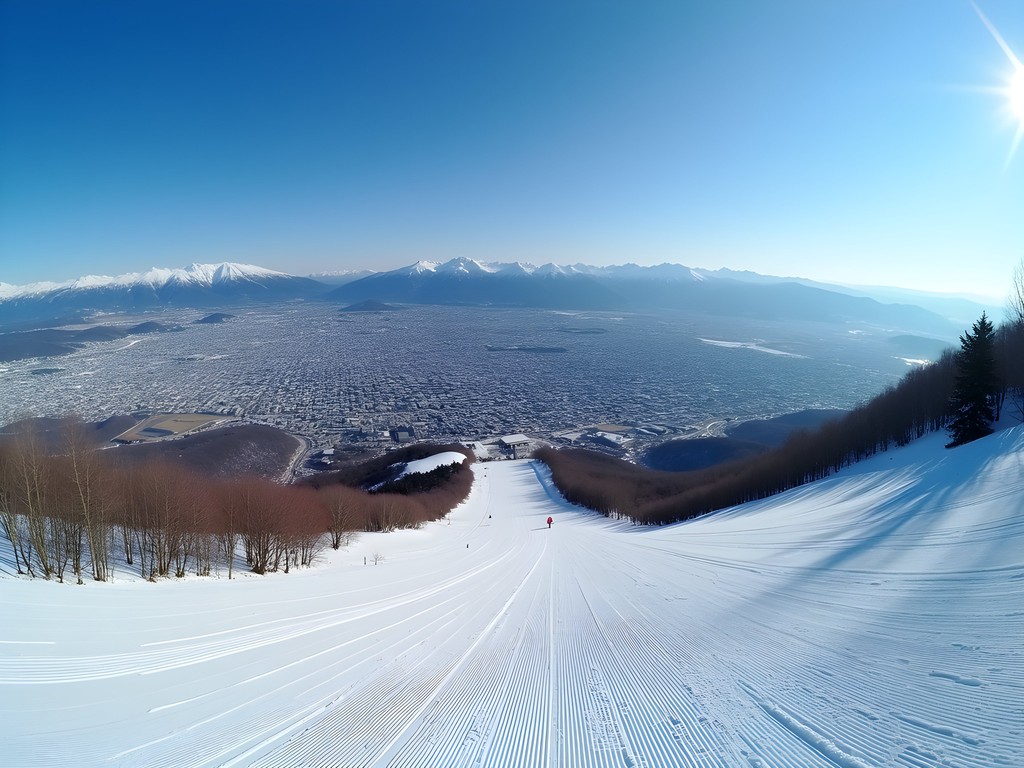
💡 Pro Tips
- Purchase lift tickets online 2-3 days in advance for 10-15% discounts
- Arrive before 9am to avoid equipment rental queues
- The Highland Zone offers more challenging terrain while the Olympia Zone is better for beginners
Volcanic Healing: Jozankei Onsen's Geological Wonder
Just 40 minutes from downtown Sapporo lies Jozankei Onsen, a hot spring haven nestled in a river valley that offers profound insight into Japan's volcanic geology. As someone who spends her professional life interpreting how ancient peoples interacted with their environments, I found myself equally fascinated by both the scientific and cultural dimensions of this geothermal sanctuary.
The indigenous Ainu people recognized these springs' healing properties centuries before modern tourism discovered them. Their traditional knowledge about the mineral content and therapeutic applications of different springs mirrors similar indigenous wisdom I've documented across archaeological sites in Mexico and Peru—a reminder that careful observation of natural phenomena transcends cultural boundaries.
Our group spent two blissful evenings at a traditional ryokan where indoor and outdoor baths offered different mineral compositions. The rotenburo (outdoor bath) experience of soaking in 102°F water while snow fell gently around us created one of those perfect travel moments where time seems to pause. The contrast between the frigid air and mineral-rich waters heightened every sense.
For anyone planning a similar experience, I recommend bringing a quick-dry travel towel for moving between different bath areas. Mine has accompanied me from Vietnamese coastal hikes to Moroccan hammams and proved equally invaluable here.
The therapeutic benefits weren't just anecdotal—after days of skiing, the mineral waters noticeably reduced muscle soreness and joint stiffness. My colleague Mei, who studies historical medical practices, explained how different mineral compositions target specific ailments, a practice documented in Japanese medical texts dating back centuries. The high sulfur content in Jozankei's waters is particularly renowned for skin conditions and respiratory health.

💡 Pro Tips
- Visit on weekdays to avoid crowds and enjoy a more contemplative experience
- Some ryokans offer private family baths (kashikiri-buro) bookable by the hour
- Drink plenty of water before and after bathing to maximize the detoxifying effects
Cultural Immersion: The Sapporo Snow Festival
Timing our visit to coincide with the Sapporo Snow Festival (Yuki Matsuri) was perhaps our most inspired decision. As an archaeologist who studies how communities create meaning through shared experiences, I was captivated by this perfect intersection of artistic expression, cultural celebration, and adaptation to environmental conditions.
The festival originated in 1950 when local high school students created six snow sculptures in Odori Park. What began as youthful creativity has evolved into an international event drawing over 2 million visitors annually. Walking through the 1.5-kilometer stretch of Odori Park, I was awestruck by the monumental snow and ice sculptures—some reaching heights of 15 meters—depicting everything from historical Japanese architecture to pop culture icons.
The international sculpture competition particularly fascinated me, as teams from different countries brought diverse aesthetic traditions to their creations. I couldn't help but see parallels to how ancient civilizations I've studied used public art to express cultural values and technological prowess. My colleague Keiko, a cultural anthropologist, pointed out how the festival represents a distinctly Japanese approach to finding beauty and community celebration even in harsh winter conditions.
Beyond visual spectacle, the festival engages all senses. We sampled regional Hokkaido specialties from food stalls—the butter corn ramen and grilled Hokkaido scallops were particular highlights—while local sake breweries offered tastings of winter-specific brews. The evening illuminations transform the sculptures into otherworldly creations, with projection mapping adding dynamic elements to static forms.
Capturing these magical moments requires preparation for extreme cold. My rechargeable hand warmer proved essential for maintaining camera dexterity during evening photography sessions. Unlike disposable warmers I've used at archaeological sites in cold regions, this rechargeable version provided consistent heat throughout our lengthy explorations while producing zero waste.

💡 Pro Tips
- Visit sculptures both during daylight and after dark for completely different experiences
- Use the subway to travel between the three main festival sites (Odori Park, Susukino, and Tsudome)
- Book accommodations at least 3-4 months in advance as the city fills quickly during the festival
Wildlife Encounters: Snowshoeing in Hokkaido's Forests
For a deeper connection with Hokkaido's natural history, we ventured beyond city limits to Nopporo Forest Park for a guided snowshoeing expedition. As someone who regularly studies how ancient peoples navigated challenging terrains, I was eager to experience this traditional mode of winter travel firsthand.
Our guide, Takashi-san, a former forestry worker with encyclopedic knowledge of local ecosystems, transformed what might have been simply physical exercise into a profound ecological education. Strapping on our snowshoes, we followed animal tracks that told stories of nocturnal dramas—the distinctive prints of Ezo red foxes, the bounding pattern of Hokkaido hares, and occasionally, the larger impressions of Sika deer.
The forest in winter revealed secrets invisible during warmer seasons. Without foliage obscuring our view, we spotted multiple Ezo flying squirrels gliding between trees and the distinctive silhouette of a Blakiston's fish owl—Japan's largest owl species and a cultural icon for the indigenous Ainu people. Takashi-san explained how these species have adapted to Hokkaido's harsh winters, drawing fascinating parallels to human adaptations in the region.
For wildlife observation, my compact binoculars proved invaluable. Their exceptional low-light performance allowed me to distinguish details even in the forest's shadowy areas, while their waterproof construction handled the occasional snow contact without issue.
The archaeological mindset of reading landscapes served me well here. Just as I might analyze soil layers at an excavation, the forest presented itself as a text to be interpreted—each bent branch, animal track, and pattern of snow accumulation offering clues about interactions between species and environment. This perspective transformed a recreational activity into something approaching field research, albeit with far more laughter and hot chocolate breaks than my usual expeditions!

💡 Pro Tips
- Book guides at least one week in advance and specify your interest in wildlife observation
- Morning tours (starting around 9am) offer the best wildlife sighting opportunities
- Bring high-protein snacks as snowshoeing burns significantly more calories than regular walking
Culinary Adventures: From Farm to Table in Winter
No exploration of a region's culture is complete without diving into its cuisine, and winter in Sapporo offers unique gastronomic experiences that connect directly to the season and landscape. As someone who studies how food systems develop within environmental constraints, I found Hokkaido's winter food culture to be a fascinating study in adaptation and innovation.
Our culinary journey began at the Nijo Market, where despite the winter season, the seafood selection remained impressively diverse. The market has operated since the early Meiji period (late 19th century), and many stalls represent multiple generations of the same family. I was particularly struck by how the winter offerings differed from summer—with fatty cold-water fish like Hokkaido salmon and cod taking center stage, along with the famous Botan ebi (sweet shrimp) that taste sweetest in colder months.
Perhaps the most emblematic winter dish is Sapporo's genghis khan (jingisukan)—grilled lamb and vegetables cooked on a distinctive dome-shaped metal grill. At the historic Sapporo Beer Garden, housed in a beautifully preserved brick building from 1890, we joined locals in this communal dining tradition. The dome grill's design—allowing fat to drain while flavoring vegetables cooking around the edges—represents ingenious culinary engineering that has remained largely unchanged for decades.
For those seeking to recreate Hokkaido flavors at home, I recommend picking up Hokkaido kombu from specialty shops. This essential ingredient for dashi (Japanese stock) is harvested from Hokkaido's cold waters and possesses a depth of umami that's noticeably superior to varieties from warmer regions.
We also visited a dairy farm on Sapporo's outskirts where winter conditions actually enhance production of the region's famously rich milk and butter. The farmer explained how the cows' metabolism adapts to cold weather, resulting in milk with higher butterfat content during winter months. This scientific explanation perfectly complemented what my taste buds were telling me about the extraordinarily creamy ice cream we sampled—a paradoxical but delightful winter treat.
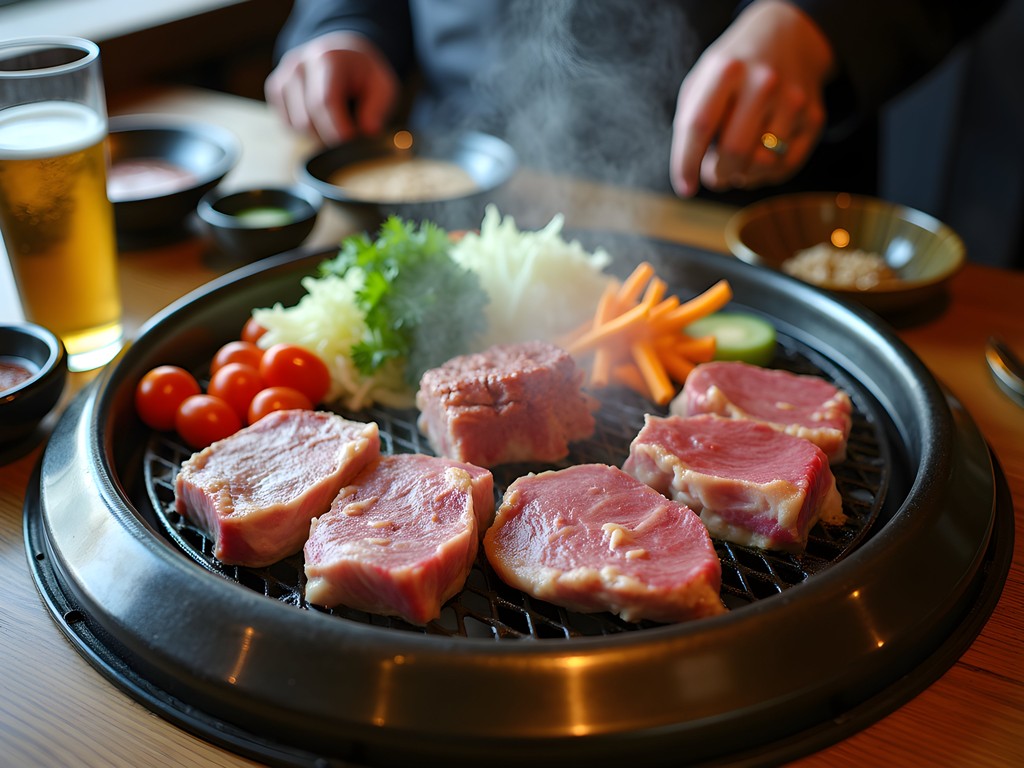
💡 Pro Tips
- Visit Nijo Market early (before 9am) for the freshest seafood and to watch vendor interactions
- Make reservations for popular jingisukan restaurants like Daruma or Sapporo Beer Garden at least 2-3 days in advance
- Look for dairy products specifically labeled as 'winter milk' for the richest flavor experience
Final Thoughts
As our week in Sapporo drew to a close, I found myself reflecting on how this winter wonderland had offered so much more than the skiing adventure we'd initially anticipated. Like the archaeological sites I typically study, Sapporo revealed itself in layers—each activity uncovering deeper connections between landscape, history, and human ingenuity. From Olympic slopes to volcanic hot springs, from monumental snow sculptures to delicate animal tracks in pristine forest snow, Sapporo in winter offers a multisensory journey through Japanese culture's relationship with its northern environment. Whether you're traveling with colleagues as I did, with family, or with friends, these shared experiences forge connections not just with the destination but with each other. As you plan your own winter adventure to Hokkaido, I encourage you to venture beyond the slopes and embrace the full spectrum of outdoor experiences this remarkable region offers. The snow-covered landscape awaits, ready to tell its stories to those willing to look beneath the surface.
✨ Key Takeaways
- Balance skiing with cultural experiences like the Snow Festival for a more comprehensive understanding of Sapporo
- Hot springs (onsen) provide both physical recovery after outdoor activities and cultural insights
- Wildlife observation through activities like snowshoeing reveals Hokkaido's unique ecosystem
- Winter-specific foods showcase how local cuisine adapts to seasonal conditions
📋 Practical Information
Best Time to Visit
January-February for peak winter conditions; early February for Snow Festival
Budget Estimate
$150-250 per day including accommodations, activities, and meals
Recommended Duration
5-7 days
Difficulty Level
Moderate
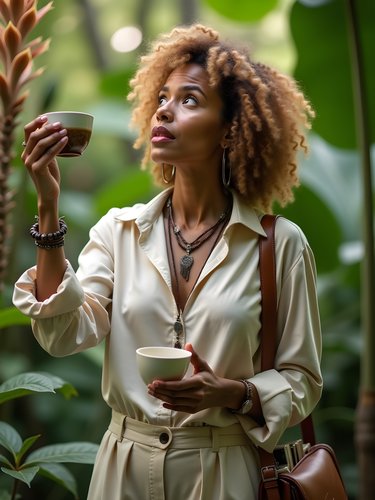
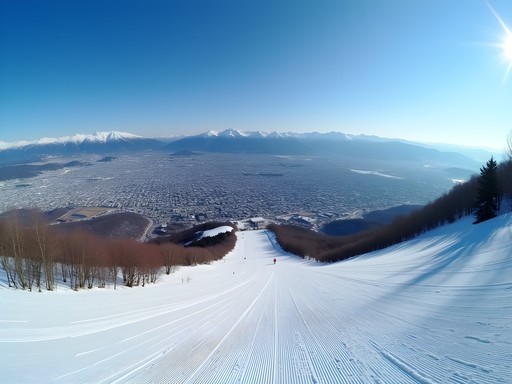
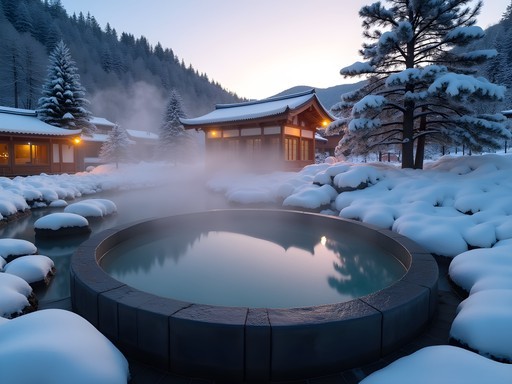













Comments
coffeelover
That shot of the ice sculptures at night with all the colorful lighting is absolutely stunning. What camera do you use?
wanderperson
This looks AMAZING!! How long would you recommend staying in Sapporo to do all these activities? Planning my first Japan trip and trying to figure out how to divide my time!
George Hayes
Ana, this couldn't have come at a better time! I'm planning a family trip to Sapporo this December with my wife and two kids (8 and 11). Your breakdown of activities beyond just skiing is super helpful since we're looking for a mix of adventures. The kids are especially excited about the Snow Festival. Question for you - how family-friendly did you find the snowshoeing excursions? My kids have decent stamina but I'm wondering if there are shorter trails suitable for families. Also, any specific family-friendly onsen you'd recommend? I've heard some are more welcoming to children than others.
coffeelover
George, not Ana but we took our kids (7 and 9) to Sapporo last year. The snowshoeing at Takino Snow Park had beginner trails perfect for kids. And Jozankei has a few onsen with private family baths you can book!
George Hayes
That's super helpful, thank you! Private family baths sound perfect for us first-timers.
backpackone8942
Just got back from Sapporo last month! Totally agree about it being more than just skiing. We did the snowshoeing in Hokkaido forests too and spotted some foxes! The guide mentioned they're pretty common but it felt magical. The Sapporo Beer Museum was also worth checking out after a cold day outdoors. One thing I'd add - the night views from Mt. Moiwa are even better than daytime. We used our night photography tripod to get some killer shots of the city lights against the snow.
wanderperson
Did you need a guide for the snowshoeing or can you rent equipment and go solo?
backpackone8942
Definitely recommend a guide if you're going deep into the forest. They know where to spot wildlife and keep you safe. We booked through our hotel, cost about ¥6000 per person including equipment.
stardiver
Pro tip: visit the onsen on weekdays. Way less crowded.
Bella Harper
Ana, your post brought back so many memories! I visited Sapporo during the Snow Festival back in 2019 and it was truly magical. The way you described that golden light across the snow-blanketed landscape took me right back. Jozankei Onsen was also a highlight of my trip - there's nothing quite like soaking in those mineral-rich waters after a day in the cold. Did you try any of the smaller, more local onsen? I found a family-run one about 20 minutes from the main area that was absolutely charming.
coffeelover
Bella, would you mind sharing the name of that family-run onsen? Planning a trip there this winter!
Bella Harper
Of course! It was called Koikawa Onsen. Small place, very authentic, and the family serves the most amazing post-bath tea. Just remember to brush up on onsen etiquette before going!
dreamguy
WOW! Those photos of the Snow Festival are incredible! I had no idea the sculptures were that massive!
citylegend
Just came back from Sapporo last month and your post captures the magic perfectly! The Jozankei Onsen was INCREDIBLE after a day of skiing. Nothing beats soaking in hot springs while surrounded by snow! Did you try the outdoor baths at night? Watching the stars while steam rises around you is an experience I'll never forget.
wanderdiver
That sounds amazing! Did you have any issues with the language barrier at the onsen?
citylegend
Not really! Most places had English signs for the basics, and the etiquette is pretty easy to follow once you've done it once. Staff were super helpful even with limited English.
globezone
Great article! I'm planning a trip for February next year. How difficult would you say the snowshoeing is for beginners? And are there guided tours available?
Ana Robinson
The snowshoeing is very beginner-friendly! We did a guided tour through the Hokkaido Nature Tours company - they provide all equipment and tailor the difficulty to the group. Highly recommend for first-timers!
Jennifer Thomas
I visited Sapporo last winter on a tight budget and was amazed at how accessible everything was! For those worried about costs, there are plenty of affordable hostels near Susukino, and many onsen have reasonable day-pass options if you can't splurge on staying overnight. The snow festival was free to attend, and I saved money by picking up bento boxes from convenience stores rather than eating out for every meal. Also, don't miss the free observation deck at the Sapporo TV Tower - almost as good as the paid one at Mt. Moiwa but without the cost! My heat tech layers were absolute lifesavers in the cold.
globezone
Thanks for the budget tips! How many days would you recommend for a first visit?
Jennifer Thomas
I'd say minimum 5 days - 3 for Sapporo itself and 2 for day trips. A week would be ideal if you can swing it!
Venture X
Premium card with 2X miles, $300 travel credit, Priority Pass